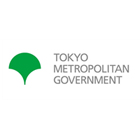
In late 2000, the Tokyo Metropolitan Government (TMG) adopted a new “Ordinance on Environmental Preservation”, which includes an array of regulatory measures to control air, water, soil, as well as noise pollution. Updated enforcement efforts were also included. An important part of the Ordinance is the “Countermeasure Against Vehicle Pollution” program, which includes the following components:
- Diesel emission control regulation (retrofit program)
- Vehicle environmental management plan
- Use of low emission vehicles
- “Idling stop” practice
- Prohibition of heavy-oil fuels
- Vehicle pollution inspectors (G-men)
The diesel emissions control regulation requires particulate matter (PM) emissions from in-use diesel vehicles be reduced to meet new emission level standards. The PM emission reduction requirements depend on the vehicle emission level at the time of its manufacture. Older vehicles have higher PM reduction requirements. Newer vehicles, which meet more stringent new engine emission standards, have more relaxed PM emission reduction requirements. All vehicles receive 7 years of grace period counting from the date of their first registration. During that grace period, it is expected that each diesel vehicle will be retrofitted with emission control devices that have been approved by the government. Approved devices must go through a rigorous testing period that ensures they are safe, reliable, durable, and meet the applicable standards for PM reduction with no considerable increases in NOx/HC/CO emissions.
 To enforce the new emissions requirements, a sticker like the one on the right is affixed once a car has been retrofitted with an approved PM reduction device. Those that do not properly retrofit their vehicle during the grace period receive an injunction on operating the vehicle. If the injunction is not obeyed, the vehicle owner’s name is made public, and a fine of up to 500,000 yen is imposed.
To enforce the new emissions requirements, a sticker like the one on the right is affixed once a car has been retrofitted with an approved PM reduction device. Those that do not properly retrofit their vehicle during the grace period receive an injunction on operating the vehicle. If the injunction is not obeyed, the vehicle owner’s name is made public, and a fine of up to 500,000 yen is imposed.